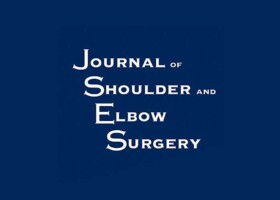
Authors:
Philippe Clavert, MD, Peter J. Millett, MD, MSc, Jon J.P. Warner, MD
Abstract:
In individuals with glenohumeral osteoarthritis, the pattern of eccentric posterior glenoid erosion and anterior soft tissue contracture is not uncommon. Surgical technique generally includes correction of glenoid orientation to neutral and anterior soft tissue releases. Biomechanically, this will balance the forces across the joint and promote more normal biomechanical loads across the glenoid, as well as a better range of motion. Despite these goals, correcting severe posterior glenoid erosions when implanting a total shoulder may be challenging. Three potential solutions exist for implanting a glenoid component and restoring proper version: (1) posterior cement augmentation/custom implant with augments, (2) posterior bone grafting, and (3) asymmetric reaming of the anterior glenoid to lower the high side and correct retroversion.
No quantitative limits, however, have ever been determined for the degree of posterior glenoid wear that can be corrected by eccentric reaming and still allow for sufficient bone stock to implant a glenoid component. Only guidelines have been suggested based on empirical experience. Therefore, the aim of this study was to define the limits of eccentric glenoid erosion that can be corrected by reaming to neutral, while still maintaining adequate bone stock for secure placement of a glenoid component.
For the complete study: Glenoid resurfacing: What are the limits to asymmetric reaming for posterior erosion?
